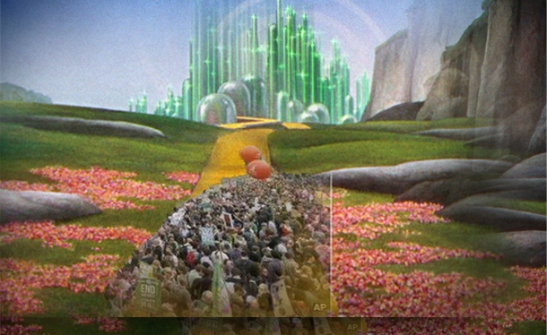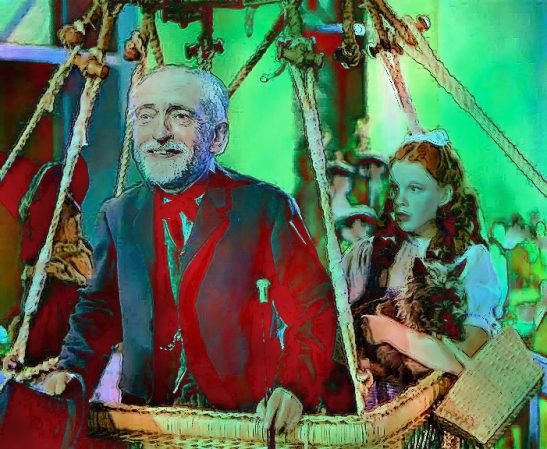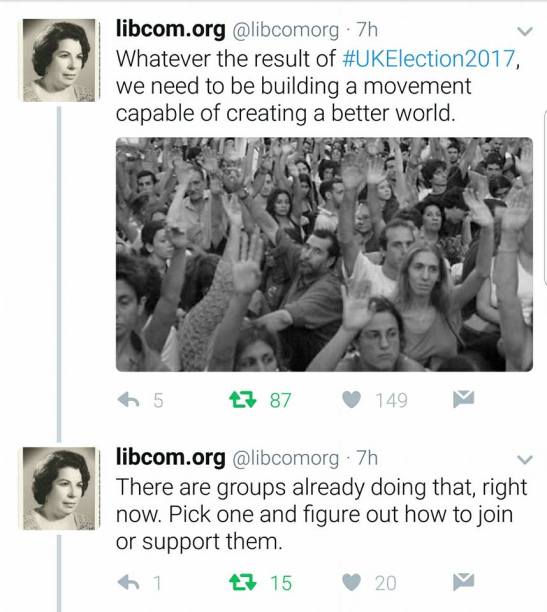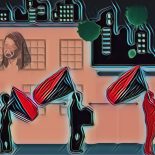Follow the Yellow Brick Road – Socialism and the British Labour Party (Part 2)

1939 was a notable year for quite a few reasons, the most obvious being the outbreak of the second world war. After the solemn vows following the last war in Europe that such a conflict would never break out again, a storm blew through central Europe in the form of the Nazi Blitzkrieg sweeping through Poland on one side and the Red Army on the other. Back in Blighty, Labour had been out of power nationally for eight years, but at local level they were making waves, most notably in London where they controlled the city council and became known for progressive policies in housing, health, education, a municipal workers’ minimum wage, equal pay for women, and integrated public transport. This reputation no doubt stood them in good stead for their next real run at power, the 1945 general election, but to prepare, a year later they accepted the opportunity to take part in Churchill’s wartime national government.
1939 was also notable for the release of a quite a remarkable film. The Wizard of Oz, a fantasy musical in glorious technicolor might not have been a box office hit at the time, but it made a lasting impression on the medium of cinema. The film follows a girl, Dorothy, who has been blown by a tornado to Munchkinland in the Land of Oz as she, her dog Toto and some friends she meets along the way travel to the emerald city to find the wonderful wizard of Oz who they believe can grant their wishes. Dorothy simply wishes to get home, the Tin Man wants a heart, the Scarecrow wants a brain and the Cowardly Lion wants to have courage. All the gang has to do, they believe, is follow the yellow brick road.
“The Spirit of ’45”, in no small sense thanks to Ken Loach’s documentary film of the same name, has become the yellow brick road of the twenty first century British left. Loach’s acclaimed film documents the momentous changes that occurred in post war Britain under the first majority Labour government and the public sentiment that swept them to power. It is a somewhat simplistic and sentimental film, but all the same, it is hard not to feel inspired in parts. It isn’t hard to see why it had such an impact in a Britain where hope was a luxury that few could afford. The film was like peeking at a different version of reality, much like the films in amazon prime’s TV adaptation of Philip K. Dick’s “The Man in the High Tower”, and that alternate reality inspired hope in those who watched and those they passed the message on to.
The message of “The Spirit of ’45” gives hope, because, like the programme that Jeremy Corbyn’s Labour ran on in the June 2017 general election, it touched on aspirations that ‘the many’ held deep down but either believed were unrealistic, or couldn’t even consciously imagine, lost in the dystopian anti-culture that the late Mark Fisher called ‘Capitalist Realism‘, “a pervasive atmosphere, conditioning not only the production of culture but also the regulation of work and education, and acting as a kind of invisible barrier constraining thought and action.” Corbyn’s whirlwind rise to prominence has certainly put a crack in capitalist hegemony and now at least, ‘the many’ believe that another world, or at least another Britain, is possible. But what of “The Spirit of ’45” and what of the party that Jeremy Corbyn leads? His manifesto might be the most radical the party has had in decades, but it is far from the most radical it has ever had, and capitalism is still here.
Containing the Spirit of ’45

The real spirit of ’45 was not the victory of the Labour Party in that year’s election, nor was it the radical social democratic programme they implemented, but the overwhelming public sentiment and growing class consciousness that swept them to power. The British working class had been decimated in number during the first world war and those who survived were left on the scrap heap. They had given so much for an empire that was determined not to cede an inch of its power and privilege to those whom it owed its existence. After the second world war ended, those who fought fascism, the women who worked the factories, and those who survived through the hardship of the blitz and rationing were determined that they wouldn’t be short changed again.
The spirit wasn’t confined to the working class either. The capitalists and the government that served them remembered the revolutionary wave that spread across Europe at the end of WW1. They feared that another such upsurge could spell the end of their system and knew they would have to make concessions. A major influence on the development of the welfare state in Britain was the Beveridge report, commissioned by the wartime cross party government and headed by the liberal economist William Beveridge. The necessity of a National Health Service was accepted in principle by the cabinet, and it was a proposal that was already being worked on by the ministry of health.
The report gained instant popularity among the general population, and while Winston Churchill’s Conservatives talked about five year plans and taking things slowly, Labour promised to implement it in full. This is why they won the 1945 general election, and though not all of them might have seen the benefit of it at the time, it was fortuitous for the capitalist class that they did. Change was in the air and if it hadn’t been given, it would have been taken. It was also fortunate for the capitalist class the world over that Britain, with help from the USA was in the financial position to make and maintain those concessions for a significant period.
The UK received 3.8 billion US dollars in loan aid via the Marshall Plan. It also received direct loans from the US to the tune of 4.6 billion USD – in total, that’s approximately 120 billion of today’s USD. Technical innovation that was spurred by the war, liberation of capital stock, labour, and raw materials from war time constraints along with the opportunities presented by a world in need of rebuilding instigated the post-war economic expansion, aka the long boom, on a global scale. The hegemony of Keynesian economics in the west coupled with free trade arrangements and international institutions established under the Breton Woods System, provided a favourable economic base for social democrats like the British Labour Party to instigate widespread radical reform.
Labour lived up to their promise. Coal mining, the steel industry, electricity, gas, telephones, railways and road haulage were nationalised. Under health minister, Aneurin Bevan, the NHS was established in 1948, and the welfare state was expanded to provide “cradle to grave” support for the working class. These measures transformed the lives of millions and their impact on Britain over the course of the second half of the twentieth century cannot be underestimated. They have set the political agenda right to this day with the labour left, the left beyond labour and the trade union movement defining itself by their defense with the Tories and the Labour right at first gradually and stealthily, then swiftly and brazenly chipping away at these gains for working people. All of this happened under capitalism, the class struggle continued, it was just the balance of class forces that had shifted and capitalism had for the time being fended off the spectre of communism.
The pond that spawned Blair

The many headed Hydra – Alastair Campbell, Tony Blair, Neil Kinnock, Hillary Benn, Hugh Gaitskell
The passive counter-revolution in the party didn’t take all that long to start. While some of the right wing of the twenties and thirties had left the party had gone with MacDonald into the now defunct National Labour, a new breed emerged almost as soon as the party took power. They were lead by soon to be party leader Hugh Gaitskell and included future prime minister James Callaghan, future ‘gang of four’ member and SDP founder Roy Jenkins and theoretical guru Anthony Crosland. Lined up against them on the left were the Bevanites, lead by socialist reformer and NHS founder Aneurin Bevan.
The division had been brewing for the entire term of Labour’s first majority government, mainly in relation to foreign policy, but it came to a head after the general election of 1950 in which Labour only scraped a five seat majority. Hugh Gaitskell, now Chancellor of the Exchequer, in an attempt to pay for Britain’s part in the Korean war, introduced charges on NHS prescriptions for glasses and dentures. Bevan, Harold Wilson and John Freeman resigned from their positions in protest and soon afterwards the government fell. Labour narrowly lost to the Conservatives in the October 1951 election and the next decade within the party would be dominated by the split between the Gaitskellites and Bevanites. This conflict, which effectively kept Labour out of government for thirteen years has parallels in the current division within the party between Corbynites and Blairites – which will undoubtedly lead to turmoil and will see any positive policies implemented by a possible future government constantly under threat.
Though not as outwardly right wing as the Blairites four decades later, Gaitskell and his followers laid the groundwork for social democratic revisionism, that would eventually take the party from posing as a mediator between classes to being outright pro-capitalist. Gaitskell’s theorist in chief, Anthony Crosland, laid out the foundations of Labour revisionism in his book The Future of Socialism. He claimed that the changes in capitalism after WW2 meant that it was now possible to achieve equity within the current system. A key objective for him and the Gaitskellites was to repeal clause four of the Labour constitution which called for the nationalisation of industry as a step towards socialism. Of course Gaitskell and his followers never achieved this aim, which was eventually carried out by Blair in the 1990’s. But the Gaitskellites had categorically won the ideological war within the party and even when Harold Wilson, former Bevanite won the party leadership in 1963, he more or less continued with Gaitskellite economic and foreign policies.
Even if Labour had tacked to the left of Social Democracy and Bevan had prevailed over Hugh Gaitskell, the party would have continued to have a problematic relationship with the unions who backed them. Within a week of taking power in 1945, Clement Atlee’s government sent conscripted soldiers to the London docks to break a go slow that was in its tenth week. In September of that year there was a national dock strike and once again the government sent the troops out. This time twenty one thousand conscripts were used to break the strike. A 1947 miners strike was roundly condemned by the party and trade union leaders alike – including some ‘communists’. Nationalisation had proven to be somewhat of a disappointment to the miners who found themselves being asked to work longer shifts “by gentlemen whose only manual labour consists of carrying briefcases to meetings and conferences that they must attempt to mine more coal before their case will even be considered is not calculated to make the average miner at all kindly disposed to the Labour Government or its hirelings.” Labour would go on to use the army to break strikes more times than the Tories ever did and in this particular instance they used anti-worker legislation from the nineteenth century to prosecute workers.
The old problem that MacDonald faced (see part one), of attempting to win social democratic reforms through parliament while keeping the unionised workers under control plagued Labour throughout the 1960’s and ’70’s and paved the way for Thatcher to come along to fight and defeat the unions in the ’80’s. Jeremy Corbyn, as radical as he is for a modern Labour leader, will if elected Prime Minister, like MacDonald, Atlee, Wilson and Callaghan, need to govern. To do this he will have to restrain the social movements and the youth who have been the backbone of his rise, in the way his predecessors restrained the unions. It is unlikely that he will decide to let them disrupt economic prosperity or the rule of law and even if he does, he will be even less likely to retain his post of party leader, as those less radical will make their move and oust him.
Paper Tiger, Flameless Dragon

With even former Bevanites capitulating to revisionist ideology, it was left to Trotskyist entryists along with some genuine left social democrats like Tony Benn to try and swing Labour back to the left. Labour’s most radical programme ever was adopted at the 1972 party conference in Blackpool. By over a million votes, the delegates “voted for a programme (that had been put forward by the Militant Tendency dominated Labour Party Young Socialists) which included the demand for ‘an enabling bill to secure the public ownership of the major monopolies’. The conference called on the executive to “formulate a socialist plan of production based on public ownership, with minimum compensation, of the commanding heights of the economy” This was a vote for socialism by decree, something anarchists and many marxists see as impossible, yet still it is the most radical position Labour ever held.
Having such a militant position on paper however, didn’t mean Labour was going to implement it. After a short lived minority government, propped up by Enoch Powell (yes, that Enoch Powell – he had left the Conservatives over Britain joining the EEC) and the Ulster Unionists, Labour won a slim majority in the second general election of 1974. Needless to say, the commanding heights of the economy were not taken into public ownership. When Harold Wilson resigned as PM in April 1976, his successor James Callaghan purged the cabinet of even the nominally left wing.
The oil crisis of 1973 had shaken the world economy and Britain was badly affected. The Wilson and Callaghan governments made wage restraint deals with the trade unions, known as the social contract (much like Social Partnership in Ireland), in an effort to curb inflation. Callaghan’s extension of wage restraint in 1978 proved the final straw for millions of workers and the ‘winter of discontent’ ensued. Auto workers, haulage drivers, public sector workers, grave diggers and rubbish collectors all took strike action over the following months. There was a perception, disseminated and encouraged by the tabloid press, of course, that the labour leadership was unable to control its base, raising questions over who was governing the country. Callaghan’s government eventually exerted pressure on the TUC to end the strikes, though even the bureaucracy had lost control over the membership and wildcat strikes continued to occur. For Callaghan it must have brought to mind Ramsay MacDonald’s comment on the 1926 general strike being “one of the most lamentable adventures in crowd self-leadership of our labour history”
With Britain in turmoil and the trade union bureaucracy being virtually indistinguishable from the Labour Party, the last chance for the industrial proletariat of old to make a revolution by seizing the means of production was slipping away. Economically, capitalism and the post-war social democratic settlement were no longer compatible. Capitalism’s growth imperative took over and the Gaitskellite hypothesis of social democratic capitalism was experimentally refuted. So too, progress in the realm of industrial machinery was about to devastate the power of the industrial working class in the same way that it had previously created it. The dockers, who were always pivotal in national strikes, saw their power decimated by the arrival of containerisation. As Paul Bowman wrote in a recent blog post on Anarchist Writers, “The defeats were inflicted by state power, by truncheon, tear gas and fist of the bootboys in blue, combined with a logistical revolution in international shipping and logistics that allowed for the stockpiling of 2 years supply of Polish coal by Thatcher, prior to the Miners strike, for e.g. Everywhere the defeats of organised labour in the West was prefaced by the defeats of the Longshoremen and dockers at the hands of containerisation, and the relocation of production to virgin territory made possible by the dropping of the capital controls that had been the foundation of the Keynesian post-war economic and financial order.”
The last hurrah for the labour left after the defeat of the miners, was the municipal reformist attempts of the Militant Tendency controlled Liverpool City Council. Over the course of the 1980’s they implemented an impressive programme of urban regeneration and home building. The cost of this however was a deficit budget, which they hoped along with mass support in the city, would force the Conservative government to increase local funding. The outcome however was the eventual defeat of the council, a McCarthyite inquisition in the Labour Party (see also part one) and Derek Hatton – leader of the Labour council becoming a pariah in the city. This defeat and the fact that Labour had been a gravity well for the Marxist left in Britain, saw radical social democracy and Trotskyism sucked into a black hole of oblivion, as Tony Blair’s New Labour emerged to sweep away the last vestiges of working class representational politics. The thing that eventually brought down Thatcher, was not a Labour victory in a general election, but direct action in the form of non-payment of the poll tax and the state losing control of London during the poll tax riots.
Off to see the wizard

All these past defeats and dead ends have not however dampened enthusiasm for the social democratic renaissance under Jeremy Corbyn. His rise has seemed to come out of the blue and stunned the mainstream media, the Tories and the right wing of the Labour Party alike. As I wrote in a previous blog post, the “success of Jeremy Corbyn in winning the leadership of the UK Labour Party shows that info-tech has changed the game for virtually everyone. It is also an example of how the central command structure that was so successful for political parties in the past is falling apart. The Labour leadership used all their resources internally and through the mainstream media to prevent his victory but they failed miserably before the might of the users of social networks.” The recent general election showed much the same pattern. The media have spent the last two years smearing him, but young people in particular don’t look to the media any more. Memes, viral videos, listicles, gifs and blogs have taken over, and despite what the establishment would have you believe, these forms of communication are far from crude, they are just a language that the old guard doesn’t understand.
Using modern networked communications, Corbyn’s team was able to translate a programme that spoke to people who modern politics doesn’t normally speak to, in a language they understood. Things that really hit home were that the NHS should not be privatised, tuition fees should be scrapped, rail should be renationalised and that a caring society was worth fighting for. It hit out at the rich who have been increasing their wealth while more and more British people are living in poverty and the Tories who serve their interests and in most cases, are very wealthy themselves. The clever thing about this campaign, was that Labour didn’t have to convince people they were right, they just told people what they already knew and in their hearts believed. Labour’s programme and Jeremy Corbyn’s oratory style and rhetoric spoke to people so easily that there’s even a bit of a cult of personality starting to surround him.
However, despite all the positives in the Corbynist manifesto, the old reliable of law and order was also drawn upon. Because of cuts to police numbers under the Tories, Labour were able to also portray themselves as the party of law and order. In the aftermath of recent terrorist attacks, it was they who won the political battle on what is normally the home ground of the Conservatives. This is important for bigger reasons than simply the fact that it can be a winner with older voters. I’ve mentioned several times that any Labour government needs to be able to govern and that governing is mainly about control. A stronger police force means a greater ability to clamp down on dissent, whether that be from reactionaries or revolutionists. The social movements who have for now thrown their lot in behind Corbyn will face police repression if they resist under a Labour government just as they would under the Tories.
It is important, that while anarchists and other libertarian leftists do not shirk the responsibility to be honest about where Labour government might lead, that we don’t patronise those who have been given hope and been inspired by the national sentiment that has been unleashed over the last few months. Trotskyists and others on the far left of the representational milieu, will talk up the prospect of a Labour government and call betrayal when they don’t live up to their standards, just as they did with Syriza. Anarchists, even if they advocated voting for the best of a bad lot in the last election, should always point out the limits of electoralism. But they should also ensure that they don’t stand outside of struggles where those who support Labour are active. Libcom recently had an excellent series of tweets on what can be done.
There are economic and systemic limits to what a Labour government can achieve, but they are not the same as the Tories and it is important to not fall into that trap of lazy analysis. And unlikely as it is, maybe Jeremy Corbyn will surprise us. He seems like a genuine chap, but even the best of them can only do as much as the system allows (not to mention the right wingers in the PLP). But if he does stay true to his rhetoric, and he genuinely wants to see ‘the many’ “rise like lions after slumber”, he might take his cue from the Wizard of Oz. Dorothy, the Tin man, the Scarecrow and the Cowardly Lion all believed that the Wizard could grant their wishes, but when they found him, it was revealed that he was just and old man with a few tricks up his sleeve. Though they were initially disappointed, he showed them that they already possessed the attributes they desired, that they had displayed them on their journey along the yellow brick road. If Jeremy Corbyn decides that instead of governing, he’s going to encourage the oppressed and exploited to rise up and govern themselves he can point to the fact that it was them who brought hope after the horrific fire at Grefnell tower, he only reflected it; He can tell them that the numbers they have risen in are impossible for the state to control if they stay the course; And he can admit that he couldn’t possibly govern them all better than they can govern themselves. All that remains is to tell you to click your heels together and say, “there’s no action like direct action”, and then do it, because magic shoes don’t really exist.
Sorry that was so long. I’m a lot more concise on twitter.


Recent Comments